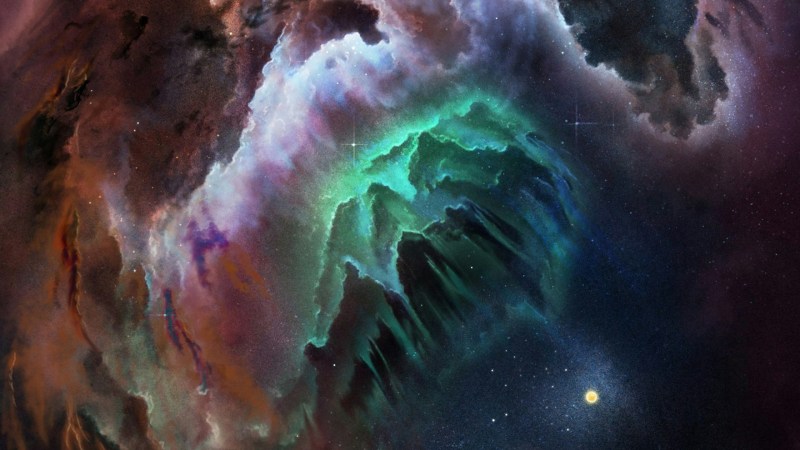Astronomers have found a giant interstellar cloud surprisingly close to Earth.
Lurking about 300 light-years from our solar system, this immense cloud of gas and dust is the closest of its kind ever found to Earth, beating the previous record holder by roughly 90 light-years. Despite being some 5,500 times as massive as the sun, the cloud went unnoticed — until now.
That’s because the cloud does not contain much carbon monoxide, the molecule astronomers often use to probe these clouds, called molecular clouds. Astronomers found this cloud by scanning the sky for ultraviolet light coming from a molecular cloud’s main constituent, hydrogen molecules. The results, published April 28 in Nature Astronomy, reveal a crescent-shaped cloud that, if visible, would appear to viewers on Earth as the largest single structure in the night sky — roughly 40 full moons wide.
“[It’s] an important finding because we want to find where the next generation of young stars will be forming near the sun,” says astronomer Blakesley Burkhart of Rutgers University in New Brunswick, N.J.
The cloud, dubbed Eos after the Greek goddess of dawn, is a cool, dense blob of dust and gas — a type known to often host stellar nurseries. However, additional analysis by the team, reported in a paper submitted April 24 to arXiv.org, suggests that Eos hasn’t had significant stellar births in recent millennia.
While molecular hydrogen makes up most of a molecular cloud’s mass, it does not emit light when it is cold, making it nearly impossible to see in clouds. However, when it’s energized by starlight along the boundaries of the cloud, the hydrogen emits light at far-ultraviolet wavelengths. Using newly released data from the South Korean satellite STSAT-1, which operated in the early 2000s, Burkhart and her team found the large structure hiding in plain sight. Those data let the astronomers estimate the size and distance to the cloud.
Eos offers a rare opportunity to study molecular cloud formation and dissipation up close. It also helps reveal how much interstellar material is available near our sun for forming stars and planets.
“Every star, including our sun, was born in a molecular cloud,” says Gregory Green, an astronomer at the Max Plank Institute for Astronomy in Heidelberg, Germany, who was not involved in the research. However, he notes, the researchers “actually find that Eos is probably not dense enough to collapse gravitationally under its own weight, suggesting that it will not form stars.”
While the cloud has just been found, it won’t stick around forever. Burkhart and colleagues estimate that Eos will slowly disappear over the next 6 million years. If the cloud were visible to us, it could be seen toward the Corona Borealis constellation in the Northern Hemisphere, spanning roughly the size of two outstretched hands in the shaka, or “hang loose,” sign.
#gas #cloud #times #massive #sun #lurks #nearby
Image Source : www.sciencenews.org

